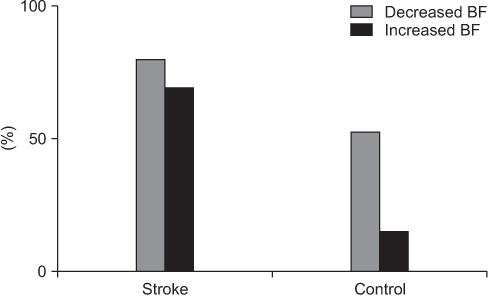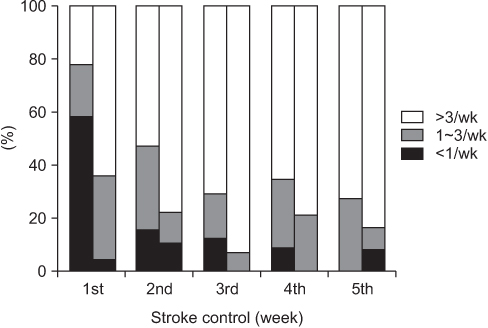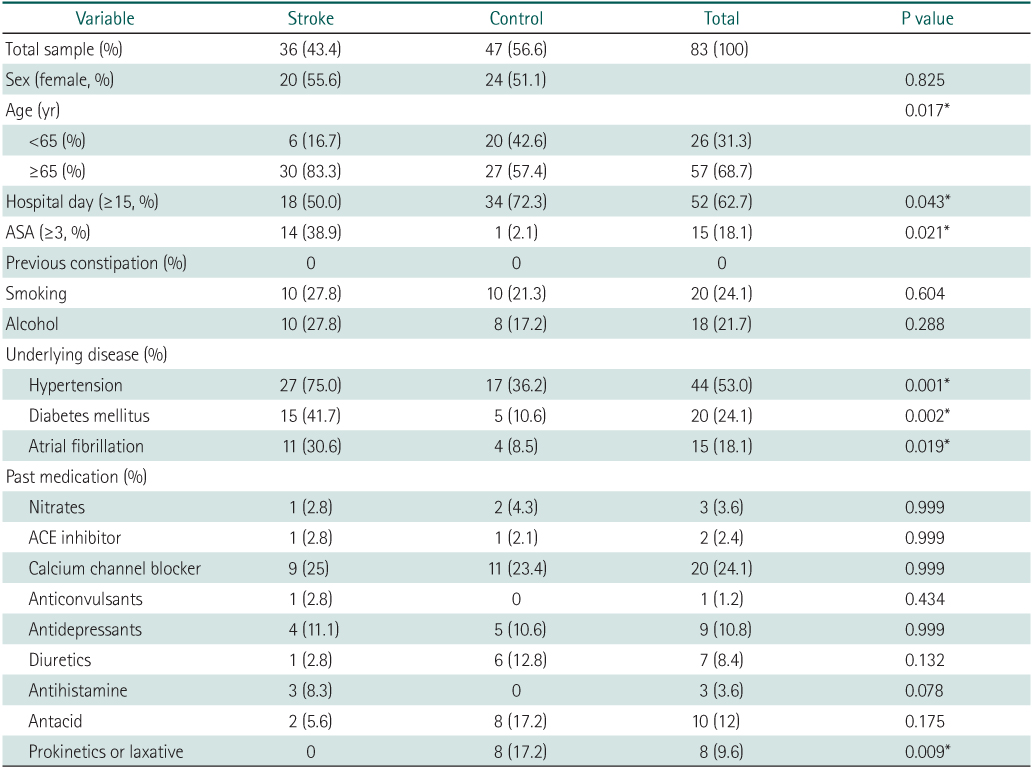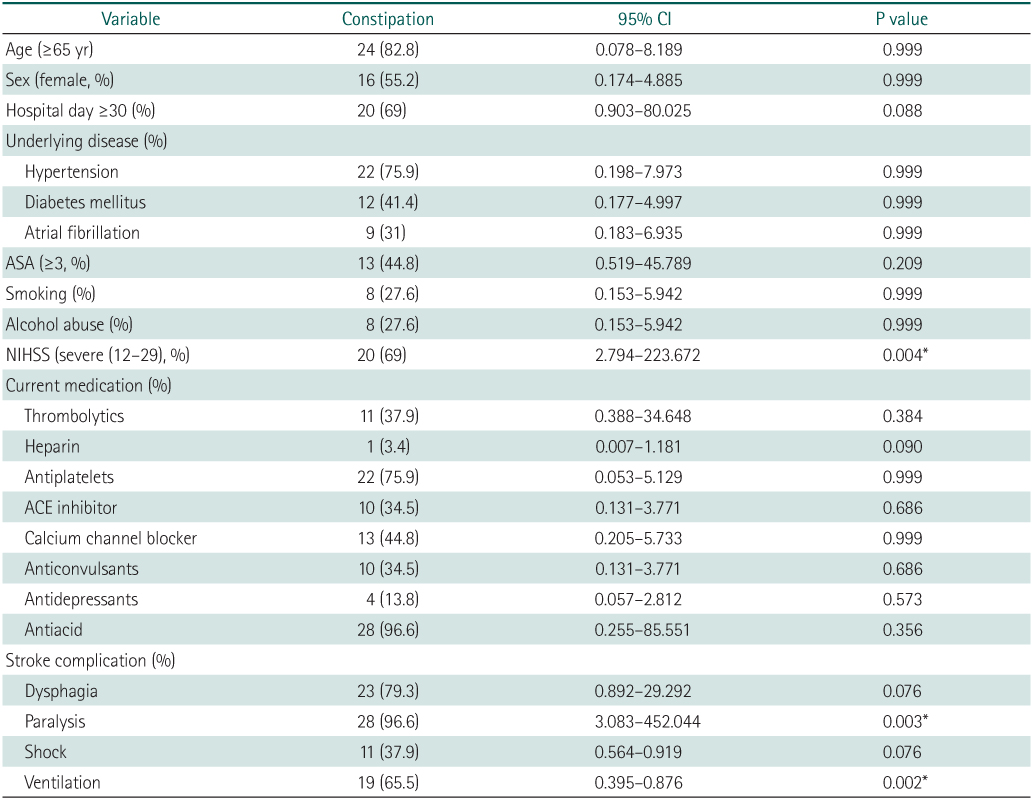Department of Internal Medicine, Ewha Womans University School of Medicine, Seoul, Korea.
*These two authors contributed equally to this work.
Copyright © 2015, The Ewha Medical Journal
This is an Open Access article distributed under the terms of the Creative Commons Attribution Non-Commercial License (http://creativecommons.org/licenses/by-nc/3.0/) which permits unrestricted non-commercial use, distribution, and reproduction in any medium, provided the original work is properly cited.


ASA, American Society of Anesthesiologists physical status classification; ACE, angiotensin-converting enzyme.
*P<0.05.

CI, confidence interval; ASA, American Society of Anesthesiologists physical status classification; NIHSS, National Institute of Health Stroke Scale; ACE, angiotensin-converting enzyme.
*P<0.05.




ASA, American Society of Anesthesiologists physical status classification; ACE, angiotensin-converting enzyme.
*P<0.05.
CI, confidence interval; ASA, American Society of Anesthesiologists physical status classification; NIHSS, National Institute of Health Stroke Scale; ACE, angiotensin-converting enzyme.
*P<0.05.
NIHSS, National Institute of Health Stroke Scale; ASA, American Society of Anesthesiologists physical status classification.
*P<0.05.
ASA, American Society of Anesthesiologists physical status classification; ACE, angiotensin-converting enzyme. *P<0.05.
CI, confidence interval; ASA, American Society of Anesthesiologists physical status classification; NIHSS, National Institute of Health Stroke Scale; ACE, angiotensin-converting enzyme. *P<0.05.
NIHSS, National Institute of Health Stroke Scale; ASA, American Society of Anesthesiologists physical status classification. *P<0.05.